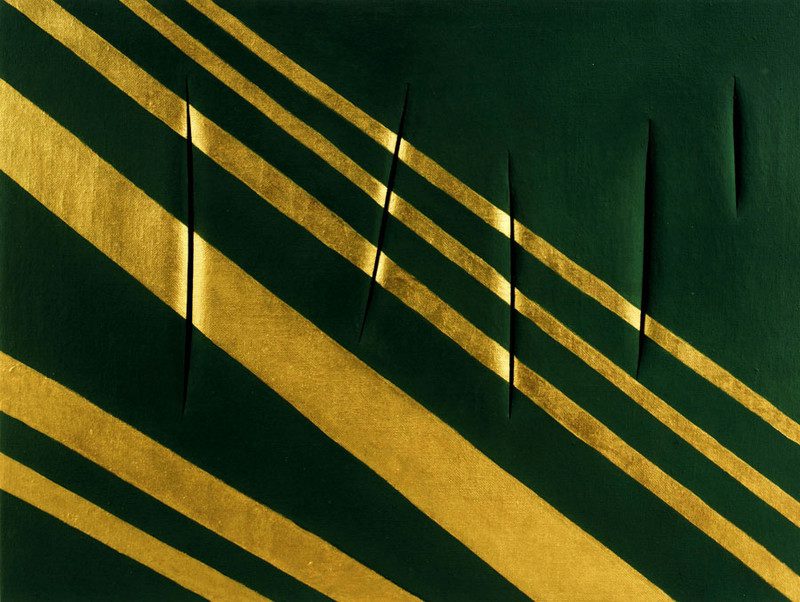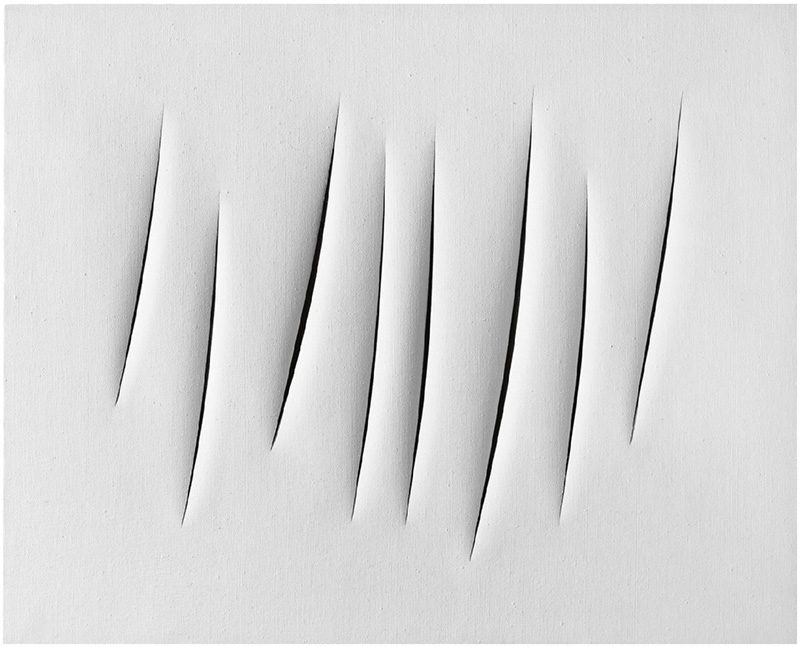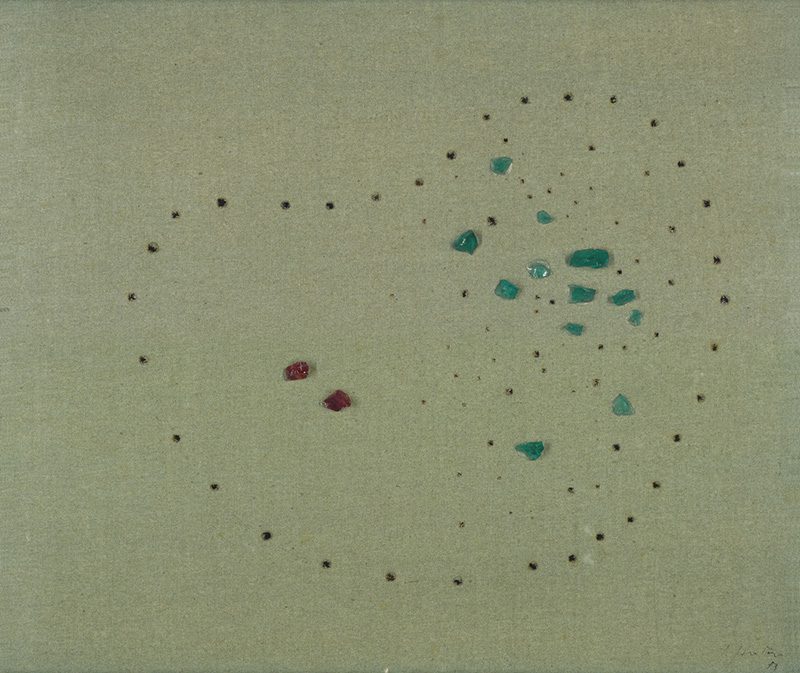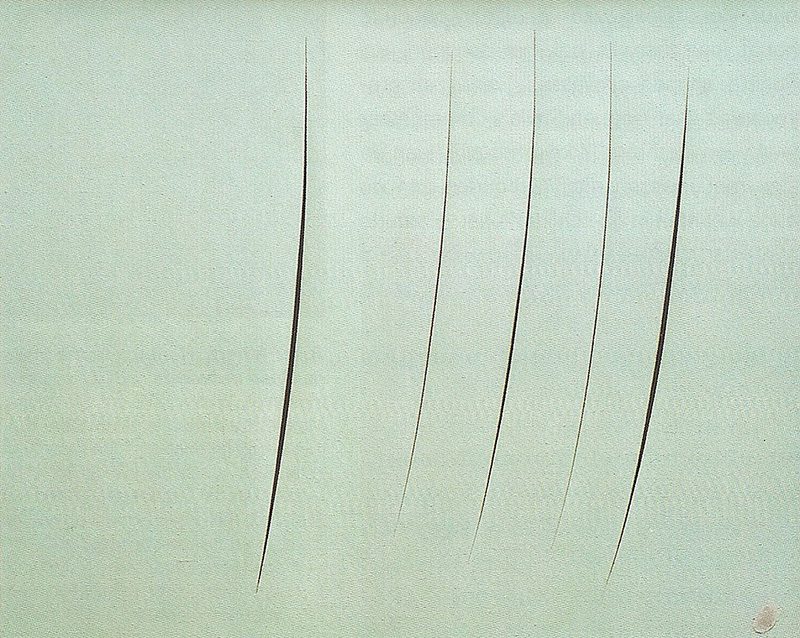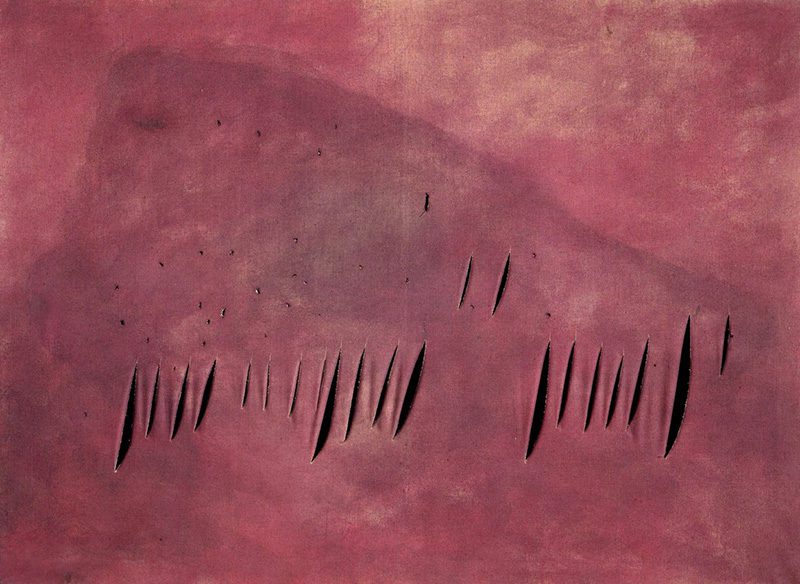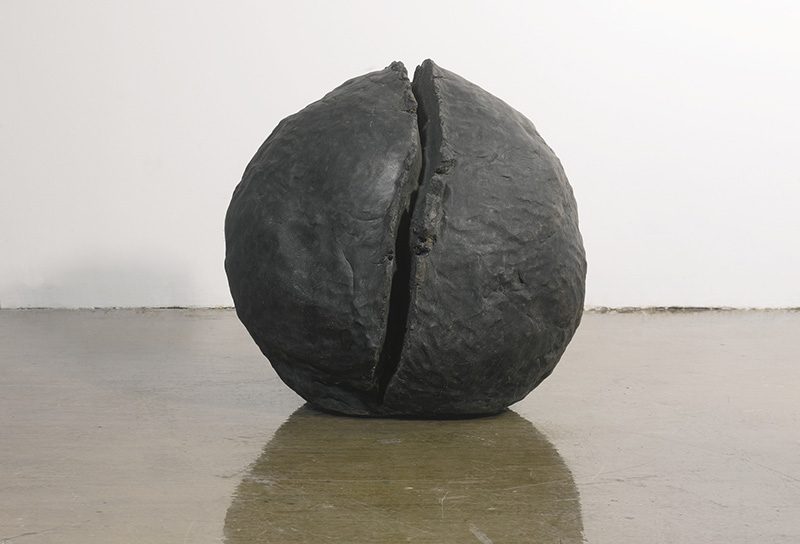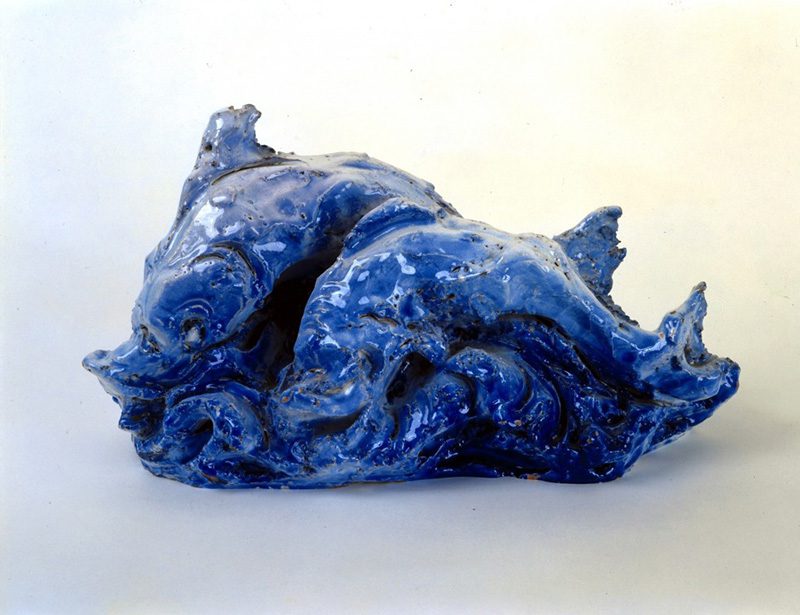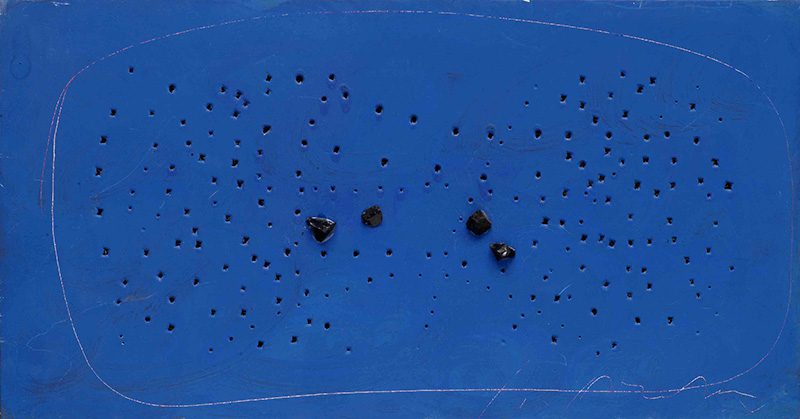TRACES:Lucio Fontana
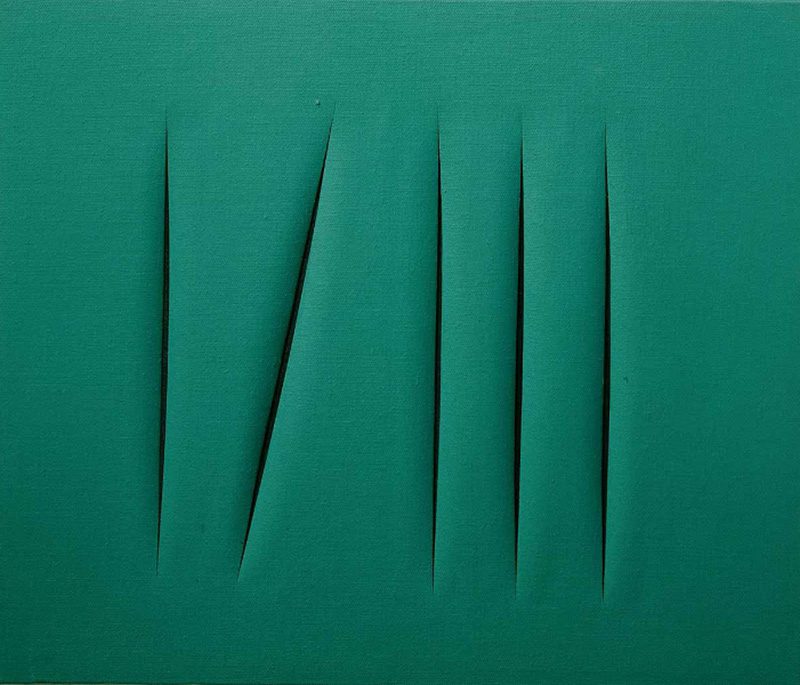 Today is the occasion to bear in mind Lucio Fontana (19/2/1899-7/9/1968). By slashing the center of his canvases, Fontana allowed three–dimensional space to intrude into an otherwise two–dimensional surface. Fontana first introduced perforations within his works in 1949 and referred to these as “Spatial Concepts”. He then began slashing his canvases in the early ‘50s and added the term “Expectations” to the title. While these works immediately conjure acts of violence and iconoclasm, Fontana claimed “I have constructed, not destroyed”. This column is a tribute to artists, living or dead, who have left their mark in Contemporary Art. Through documents or interviews, starting with: moments and memories, we reveal out from the past-unknown sides of big personalities, who left their indelible traces in time and history…
Today is the occasion to bear in mind Lucio Fontana (19/2/1899-7/9/1968). By slashing the center of his canvases, Fontana allowed three–dimensional space to intrude into an otherwise two–dimensional surface. Fontana first introduced perforations within his works in 1949 and referred to these as “Spatial Concepts”. He then began slashing his canvases in the early ‘50s and added the term “Expectations” to the title. While these works immediately conjure acts of violence and iconoclasm, Fontana claimed “I have constructed, not destroyed”. This column is a tribute to artists, living or dead, who have left their mark in Contemporary Art. Through documents or interviews, starting with: moments and memories, we reveal out from the past-unknown sides of big personalities, who left their indelible traces in time and history…
By Dimitris Lempesis
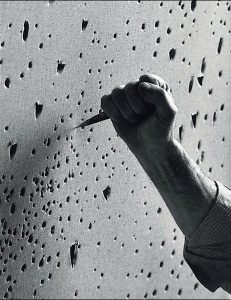 Lucio Fontana was born in Rosario de Santa Fé, Argentina. His father was Italian and his mother Argentinean. He lived in Milan from 1905 to 1922 and then moved back to Argentina, where he worked as a sculptor in his father’s studio for several years before opening his own. In 1926, he participated in the first exhibition of Nexus, a group of young Argentinean artists in Rosario de Santa Fé. On his return to Milan in 1928, Fontana enrolled at the Accademia di belle arti di Brera, which he attended for two years. The Galleria del Milione, Milan, organized Fontana’s first solo exhibition in 1930. In 1934, he joined the group of Abstract Italian sculptors associated with the gallery. The artist traveled to Paris in 1935 and joined the group Abstraction-Création (1931–36). The same year, he developed his skills in ceramics in Albisola, Italy, and later at the Sèvres factory, near Paris. In 1939, he joined the Milanese anti-Fascist artists’ group Corrente (1938–43). He also intensified his lifelong collaboration with architects during this period. In 1940, Fontana moved to Buenos Aires. With some of his students, he founded in 1946 the Academia de Altamira, from which emerged in 1946 the “Manifesto. He moved back to Milan in 1947 and in collaboration with a group of writers and philosophers signed the “Primo Manifesto Dello Spazialismo”. He subsequently resumed his ceramic work in Albisola to explore these new ideas with his “Concetti Spaziali” (1949–60). The year 1949 marked a turning point in Fontana’s career, he concurrently created his first series of paintings in which he punctured the canvas with holes, and his first Spatial environment, a combination of shapeless sculptures, fluorescent paintings, and black lights to be viewed in a dark room. The latter work soon led him to employ neon tubing in ceiling decoration. In the early 1950s, he participated in Italian Art Informel exhibitions. During this decade, he explored working with various effects, such as slashing and perforating, in both painting and sculpture. The artist visited New York in 1961 during a show of his work at the Martha Jackson Gallery. In 1966, he designed opera sets and costumes for La Scala, Milan. These can be divided into broad categories: the “Buchi”, beginning in 1949, and the “Tagli”, which he instituted in the mid-‘50s. Around 1960, Fontana began to reinvent the cuts and punctures that had characterized his highly personal style up to that point, covering canvases with layers of thick oil paint applied by hand and brush and using a scalpel or knife to create great fissures in their surface. In 1961, for an exhibition of Contemporary painting entitled “Art and Contemplation”, held at Palazzo Grassi in Venice, he created a series of 22 works dedicated to the city. He manipulated the paint with his fingers and various instruments to make furrows, sometimes including scattered fragments of Murano glass. As a consequence of his first visit to New York in 1961, he created a series of metal works between 1961 and 1965. The works consisted of large sheets of shiny and scratched copper, pierced and gouged, cut through by dramatic vertical gestures that recall the force of New York construction and the metal and glass of the buildings. In the last years of his career, Fontana became increasingly interested in the staging of his work in the many exhibitions that honored him worldwide, as well as in the idea of purity achieved in his last white canvases. These concerns were prominent at the 1966 Venice Biennale, for which he designed the environment for his work, and at the 1968 Documenta, Kassel, West Germany. Fontana died on 7/9/68, in Comabbio, Italy.
Lucio Fontana was born in Rosario de Santa Fé, Argentina. His father was Italian and his mother Argentinean. He lived in Milan from 1905 to 1922 and then moved back to Argentina, where he worked as a sculptor in his father’s studio for several years before opening his own. In 1926, he participated in the first exhibition of Nexus, a group of young Argentinean artists in Rosario de Santa Fé. On his return to Milan in 1928, Fontana enrolled at the Accademia di belle arti di Brera, which he attended for two years. The Galleria del Milione, Milan, organized Fontana’s first solo exhibition in 1930. In 1934, he joined the group of Abstract Italian sculptors associated with the gallery. The artist traveled to Paris in 1935 and joined the group Abstraction-Création (1931–36). The same year, he developed his skills in ceramics in Albisola, Italy, and later at the Sèvres factory, near Paris. In 1939, he joined the Milanese anti-Fascist artists’ group Corrente (1938–43). He also intensified his lifelong collaboration with architects during this period. In 1940, Fontana moved to Buenos Aires. With some of his students, he founded in 1946 the Academia de Altamira, from which emerged in 1946 the “Manifesto. He moved back to Milan in 1947 and in collaboration with a group of writers and philosophers signed the “Primo Manifesto Dello Spazialismo”. He subsequently resumed his ceramic work in Albisola to explore these new ideas with his “Concetti Spaziali” (1949–60). The year 1949 marked a turning point in Fontana’s career, he concurrently created his first series of paintings in which he punctured the canvas with holes, and his first Spatial environment, a combination of shapeless sculptures, fluorescent paintings, and black lights to be viewed in a dark room. The latter work soon led him to employ neon tubing in ceiling decoration. In the early 1950s, he participated in Italian Art Informel exhibitions. During this decade, he explored working with various effects, such as slashing and perforating, in both painting and sculpture. The artist visited New York in 1961 during a show of his work at the Martha Jackson Gallery. In 1966, he designed opera sets and costumes for La Scala, Milan. These can be divided into broad categories: the “Buchi”, beginning in 1949, and the “Tagli”, which he instituted in the mid-‘50s. Around 1960, Fontana began to reinvent the cuts and punctures that had characterized his highly personal style up to that point, covering canvases with layers of thick oil paint applied by hand and brush and using a scalpel or knife to create great fissures in their surface. In 1961, for an exhibition of Contemporary painting entitled “Art and Contemplation”, held at Palazzo Grassi in Venice, he created a series of 22 works dedicated to the city. He manipulated the paint with his fingers and various instruments to make furrows, sometimes including scattered fragments of Murano glass. As a consequence of his first visit to New York in 1961, he created a series of metal works between 1961 and 1965. The works consisted of large sheets of shiny and scratched copper, pierced and gouged, cut through by dramatic vertical gestures that recall the force of New York construction and the metal and glass of the buildings. In the last years of his career, Fontana became increasingly interested in the staging of his work in the many exhibitions that honored him worldwide, as well as in the idea of purity achieved in his last white canvases. These concerns were prominent at the 1966 Venice Biennale, for which he designed the environment for his work, and at the 1968 Documenta, Kassel, West Germany. Fontana died on 7/9/68, in Comabbio, Italy.

